Bogotá is the capital of Colombia and it’s where many travelers start their trips. With many international flights arriving to Bogotá’s El Dorado airport, it just makes sense to add a day to your itinerary. While there is so much to see outside of Colombia’s capital city, I think it’s still worth spending one day exploring this city.
In this guide, I’ll cover how to spend one day in Bogotá. We’ll hit some iconic views, visit the best museum, have a little time for people watching, and explore the street art in the historic old town.
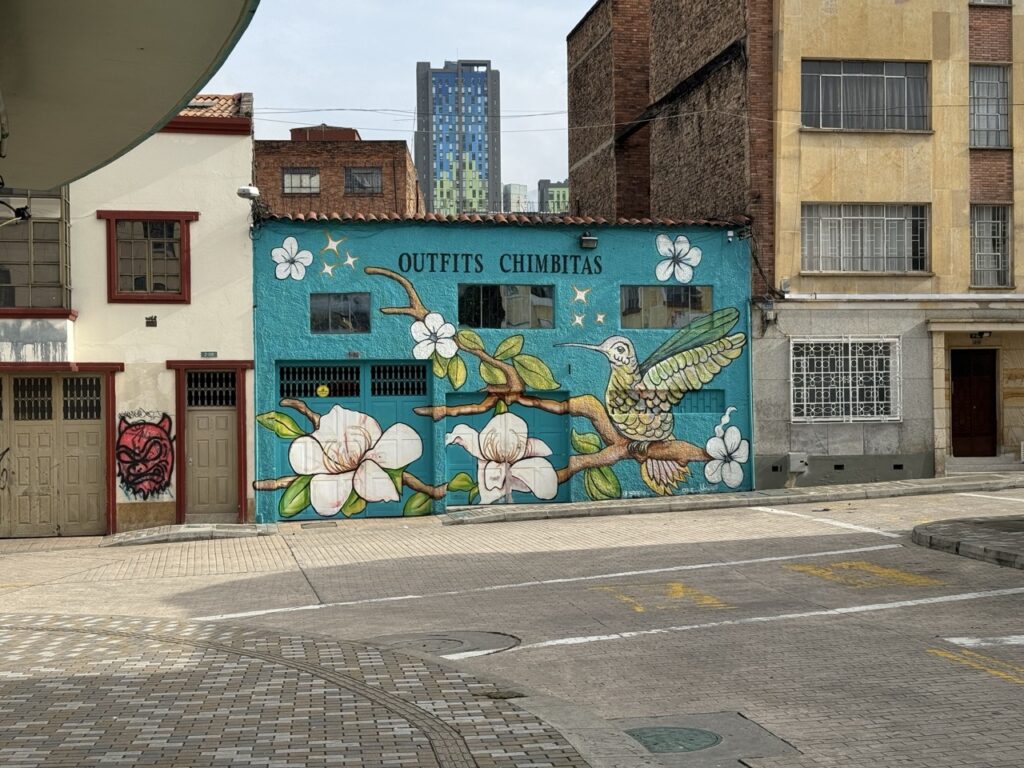
One Day in Bogotá
Much of this itinerary is centered in the La Candelaria area of Bogotá. Many backpackers make this area their base for exploring the city, but it’s not the only place to stay (I’ll cover more details on this later).
So, if you’re staying in La Candelaria, great. If you’re not, you may have to start this itinerary a bit earlier because you’ll have to travel to your starting destination.
9:00 – Monseratte
I’m starting this one day in Bogotá off with an amazing view of the city. Monseratte is a mountain that overlooks the city and features a church on the top. The views here are absolutely incredible and I think it’s worth getting these views at least once while you’re in Bogotá.
There are three ways to get to the top of Monseratte. You can hike, take the cable car, or ride the funicular.
Hiking is the cheapest, but also the most labor intensive. The hike is short in distance, but it’s the elevation that makes it difficult. Bogotá itself sits at nearly 8500 feet of elevation and Monseratte sits at 10,000 feet. I live at sea level and was already huffing and puffing up some of the hills in Bogotá, so I opted to skip the actual hike. But budget and ambitious travelers can hike to the top for free. Just note that you may need to adjust the times on this itinerary depending on how fast you climb the mountain.
For those not wanting to hike, look at the cable car or the funicular. The cable car is cheaper, but when I visited, the cable car wasn’t running and everyone who wasn’t hiking took the funicular. At the time, the funicular cost 29,500 COP (about $6.60 USD). Join the line and purchase your ticket and then back into your vehicle for a scenic (and less sweaty) ride to the top.
At the top of Monseratte, you’ll have a fantastic view of Bogotá and you’ll really be able to see how massive this city is. Seriously, it has incredible sprawl and it helps to put into perspective why it takes so long to get from one end of the city to the other.
Besides just taking in the views, you can walk through the gardens, visit the church, and even shop at the small market behind the church. When you’ve had enough, head back down the way you came.
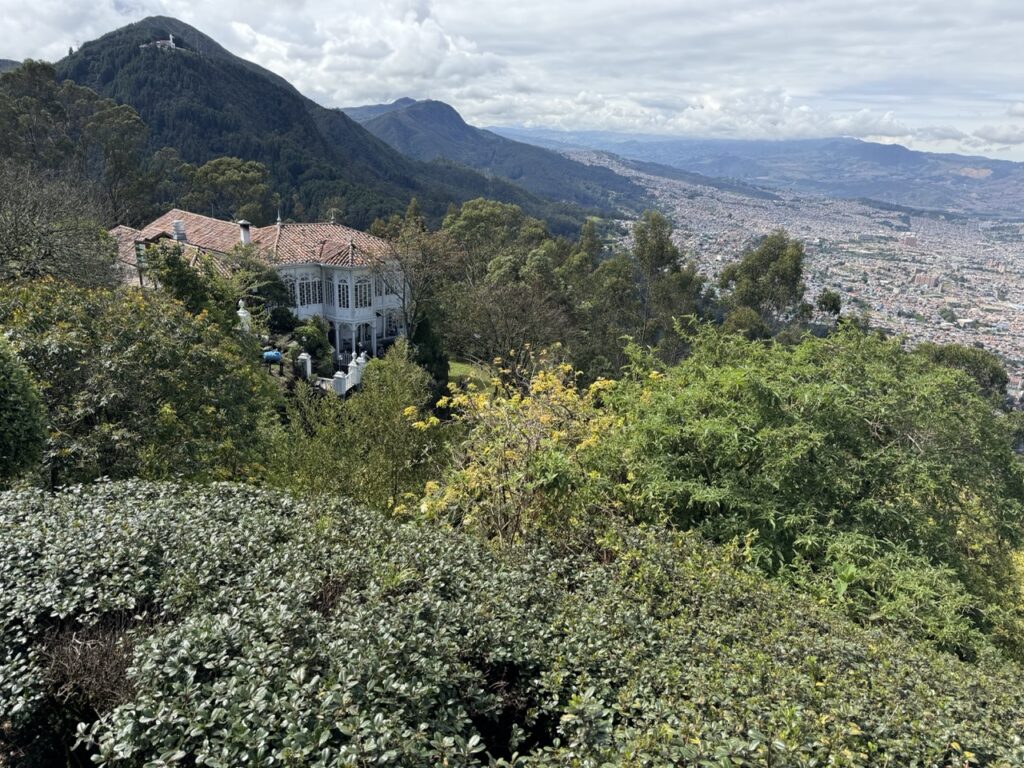
11:30 – Walk from Monseratte to Museo del Oro
From the funicular station at Monseratte, it’s a twenty minute walk to our next stop at the Museo del Oro. The good news is that the walk is mostly downhill which can be a relief if you’re also struggling to breathe at a higher altitude.
12:00 – Museo del Oro
While Bogotá is jam packed with museums, the one that seems to make it on to every itinerary is the Museo del Oro, or Gold Museum. This museum tells the story of gold in Colombia. You’ll learn how the indigenous tribes worked with gold and see artifacts that have been collected from many of these tribes.
For me, an hour was enough to go through the museum, but if you have a deep interest in pre-Colombian history or even metal working, you may want to budget just a bit more time.
Entrance to the Museo del Oro is 5,000 COP (about $1.15 USD). Note that the Museo del Oro, along with many museums in Bogotá, is closed on Mondays. Make sure to plan your trip accordingly.
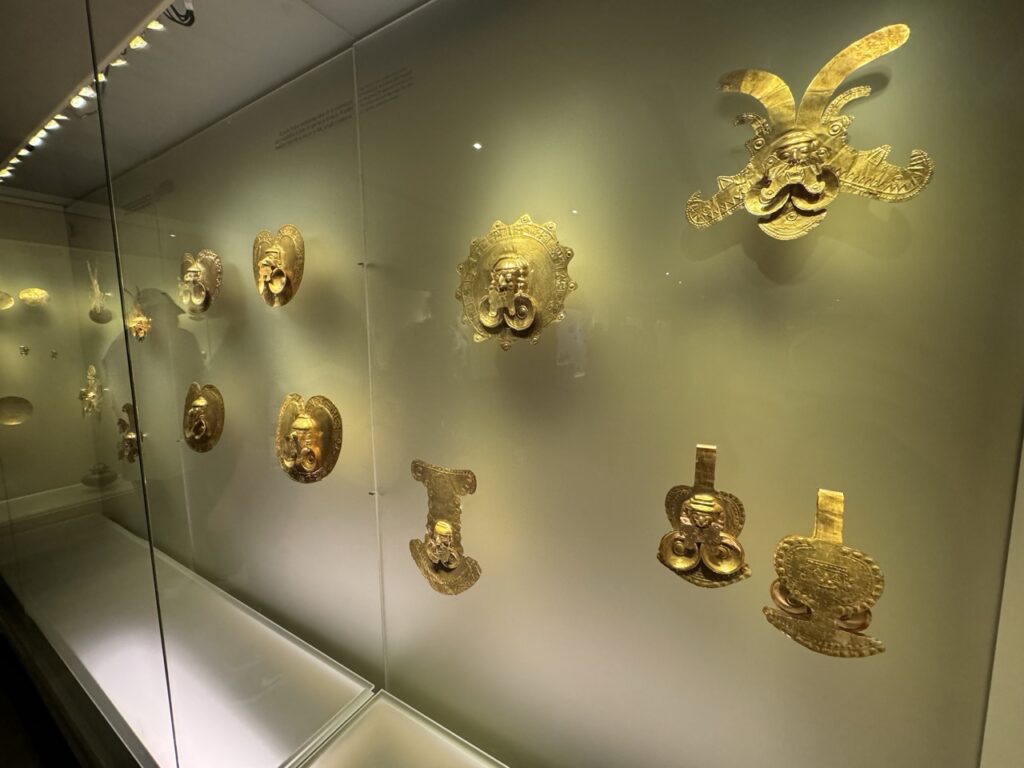
1:00 – Lunch
I’ll be the first to admit that I often don’t include a break for lunch on these one day itineraries. I just get so focused on sightseeing and trying to cram everything in that stopping for food just takes a back seat.
But in this itinerary, I’m giving you time to eat. Find a restaurant that looks good and get some lunch. We’ll pick back up after lunch.
2:00 – Head to Plaza de Bolivar
After lunch, it’s time to head to Plaza de Bolivar. From the Museo del Oro, it’s a ten to fifteen minute walk, but I’m giving you more time. There’s two reasons. First, depending on where you ate lunch, you may have a slightly longer walk. Second, you can walk down Carrera 7 which is a mostly pedestrianized street (there’s a few crossings for cars) that is lined with all sorts of vendors.
The vendors can become repetitive but later in the afternoon, there are so many Colombians out walking that it’s just a fun place to be and people watch.
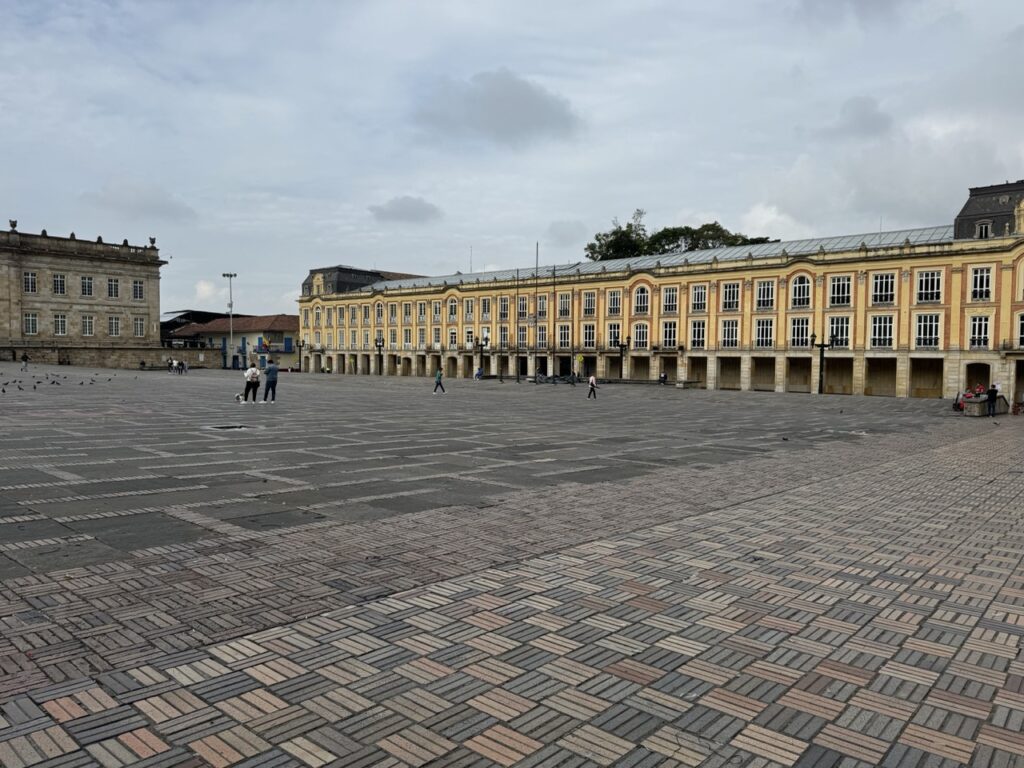
2:30 – Plaza de Bolivar
Plaza de Bolivar is the major square in Bogotá. While many South American cities have their “Plaza de Armas”, here in Bogotá it’s Plaza de Bolivar. You’ll find a square that is perfect for people watching. Plus, stop in and see the cathedral (Catedral Primada de Colombia). You don’t need a lot of time here, but I still think it’s a good idea to stop by on your visit to Bogotá.
When I visited, the square was mostly blocked off due to a concert and that changed the whole vibe of the square. People hugged the outer perimeter as they moved around. We could see the architecture but it wasn’t until I returned two days later and the blockades were gone that I could really appreciate how massive this square was (although at 8:30 in the morning, Plaza de Bolivar is not very lively).
3:00 – La Candelaria
We’re finishing the day with no set plans, but we’ll be in an area that’s fun to explore. La Candelaria is the historic center of Bogotá and there’s plenty to do here. There’s more museums, walking tours, cafes, and more. But if I’m honest, I really just enjoyed strolling through the neighborhood. There is a ton of street art here and in some ways, I was reminded of walking through Valparaíso in Chile. It seemed like on every street you took, there was a new and exciting mural.
To get the most out of your visit, you can consider taking a walking tour. And yes, some even focus strictly on the street art. But the rest of the afternoon is yours to explore the streets and see what you find. Though, I will suggest stopping at Plazoleta Chorro de Quevedo and Iglesia de Nuestra Señora de la Candelaria.
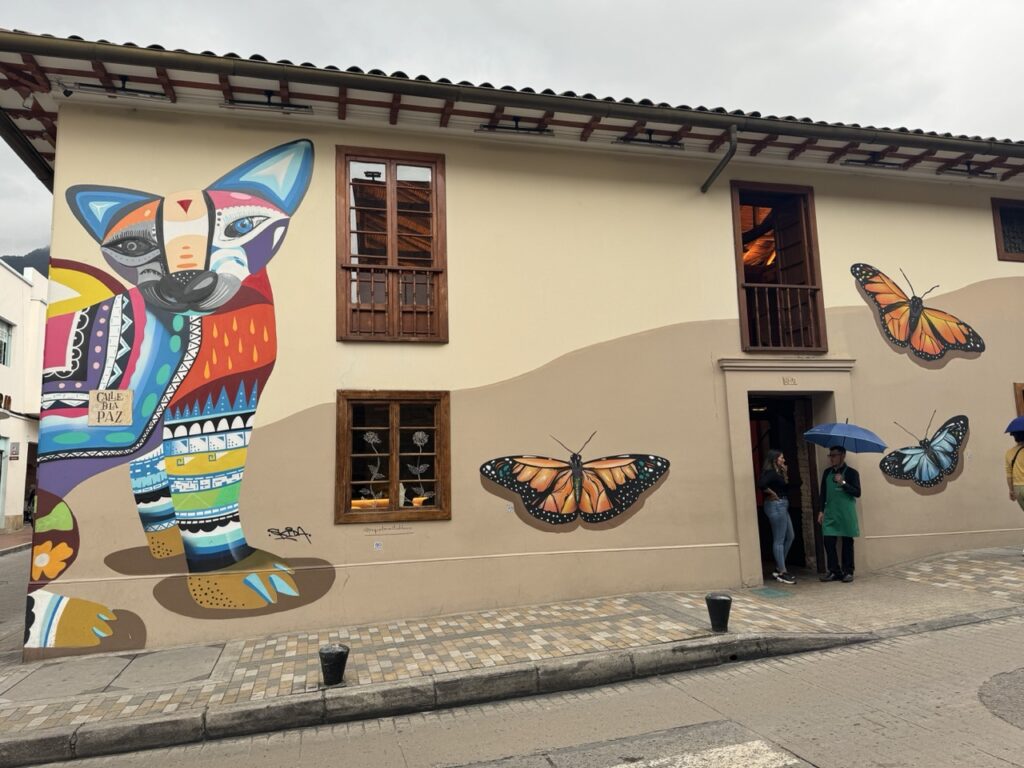
5:00 – Traveler’s Choice
The main part of this one day Bogotá itinerary is over and it’s up to you how you want to spend your night. Get a nice meal, have a drink, watch a show, play tejo, or something else entirely. The choice is yours.
Just as a note, with Bogotá sitting so close to the equator, sunrise and sunset is pretty consistent all year round and you should expect the sun to set around 5:30 for most of the year.
With More Time
If you have more than one day in Bogotá, fear not. There are so many museums in the city so if you have more time, I’d recommend looking into one of the many museums here. There’s the Colombian National Museum, the Emerald Museum, the Military Museum, the Bogotá Museum of Modern Art, the Botero Museum, and so many more.
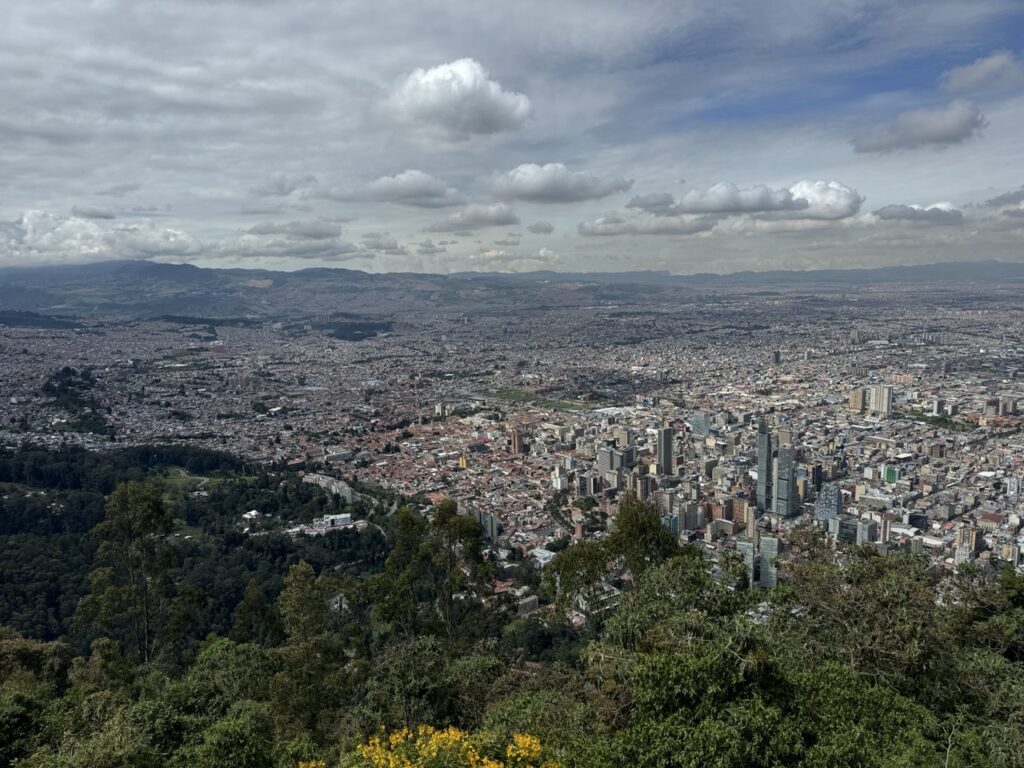
Beyond Bogotá
Another option is to venture beyond Bogotá. There’s a few popular day trips from the city and if you have extra time, it’s worth considering taking one of these day trips.
Zipaquirá is famous for its Salt Cathedral and it’s the first of the Seven Wonders of Colombia. The cathedral was carved out of an active salt mine by miners who had finished their shifts. Inside the cathedral, you’ll follow the Stations of the Cross as you work your way deeper into the mine until you reach the nave and the main part of the cathedral where masses are held.
At Guatavita, you’ll visit stunning scenery. But what makes this place more interesting than any of the other beautiful places you can visit is that this is the basis for the famous Legend of El Dorado. When Spanish conquistadors arrived here, they found gold artifacts along this lagoon and got excited. So they started to excavate to take as much of the gold as they could.
However, the conquistadors decided to melt the artifacts down to make it easier to ship and it was then they realized that the gold they found was actually a mix of gold and other metals like platinum and copper. Learning this, they abandoned their plans at Guatavita and headed further south in the country.
Several day trips will combine both Zipaquirá and Guatavita into one day. It’s a long day (I should know, this is the day trip I chose), but it offered a great look at two unique sights in Colombia.
One other option that I have to mention is a day trip to the colonial town of Villa de Leyva. Is the town beautiful? Yes. Is it worth a visit? Yes. Should you visit it as a day trip from Bogotá? I’m not sure about that.
From Bogotá’s Terminal Norte, it’s a three hour drive one way to Villa de Leyva (four hours if you leave from Terminal Salitre). So, you need to be prepared to spend 6 to 8 hours on a bus which doesn’t leave a lot of time for exploring. Admittedly there aren’t a ton of sights in Villa de Leyva, but I think it’s just too much for a day trip. Pack up your bags and spend the night if you plan to visit.
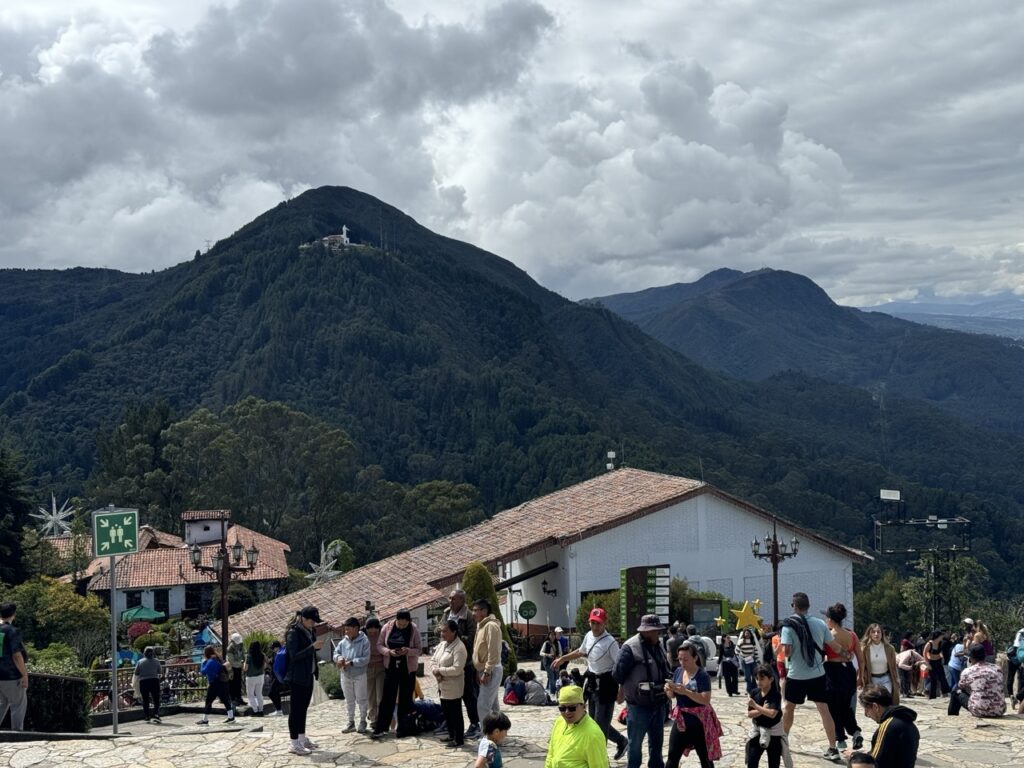
Getting Around Bogotá
Depending on where your hotel is located, you may not even need to worry about public transportation. I used a taxi to get from the airport to my hostel and an Uber to get from my hostel to the bus station. For everything else in Bogotá, I was able to walk.
But if you are staying in another neighborhood (I stayed in La Candelaria), you may need to use some form of transportation. There is no subway or metro, but the city is working on building its first line (supposedly to open in 2028 but a Colombian I talked to finds that incredibly optimistic). That leaves two options: take a taxi (or Uber) or get the bus. For the bus, you’ll need to pick up a “Tu Llave” card and load it up with some money, but then you can use the buses to get you to where you need to go.
As far as Uber, I read conflicting reports about whether or not you could use Uber in Colombia. It seems that Uber still exists in a bit of a grey area, but Uber is available in many of the major cities. I used it and did get to where I needed to go, but the driver somehow got lost on the way to my hostel, even with Uber giving him directions, so that wasn’t ideal.
Where to Stay in Bogotá
Bogotá is huge, so there are a lot of options for where to stay. This itinerary focuses on La Candelaria, so it’s definitely easiest to stay there. While I felt completely safe during the day as I explored La Candelaria, this area of the city doesn’t have the best reputation at night. A safer option is the nearby Chapenero neighborhood or the even further Parque 93 neighborhood.
I stayed in La Candelaria because I wanted a hotel that was centrally located to what I wanted to see. I very rarely go out after dark, so the nighttime safety wasn’t a huge concern for me (since I made it a point to be back in my hostel once the sun set).
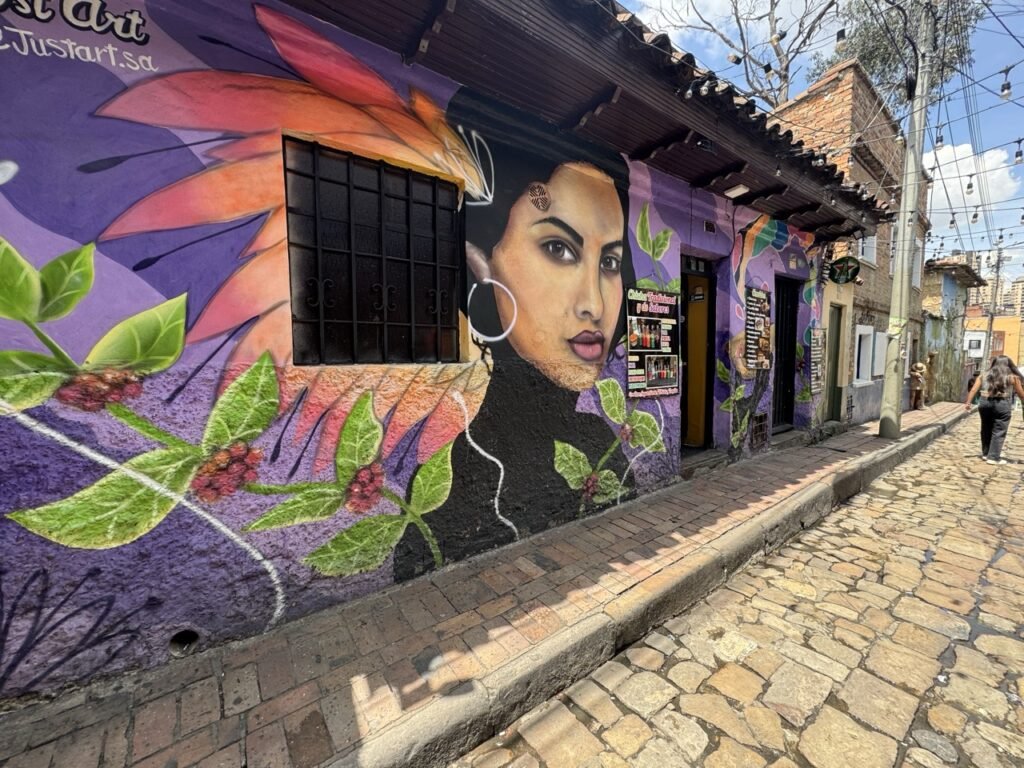
When to Visit Bogotá
Bogotá can be visited all year round. While many countries have weather that can change drastically throughout the year, Colombia has just two season: dry season and rainy season.
Dry season is more popular because rain is less likely. Dry season typically runs from December through February or March. Then there is another dry season from June through August.
Rainy season comprises of the other months of the year. April and May and September through November. While it is rainy season, it may not rain every day, but you need to be prepared that it could rain at any time. Learn more about visiting during rainy season.
While dry season, particularly December through February, is the most popular time to travel, I chose to visit in November. It was rainy season and it did rain every day of my visit. However, the rain typically did not occur until the late afternoon or evening, meaning on most days my mornings were dry and I was able to explore in the dry sunshine.
Final Thoughts
Bogotá is a large city that has a lot to offer travelers. There are more museums than you count, plus excellent views and interesting neighborhoods to explore. This one day itinerary just scratches the surface of what Bogotá has to offer, but for those with limited vacation days, this itinerary will allow you to see the highlights.
Continue Your Adventure
Bogotá & Nearby: Don’t miss Monseratte for the best view of Bogotá. Colombia’s capital city is great, but don’t be afraid to take a day trip. I loved the Guatavita Lagoon and Zipaquirá Salt Cathedral. While it’s technically possible to day trip to Villa de Leyva, I recommend spending the night. Learn how to travel to Villa de Leyva with my transportation guide.
Colombia: Start planning your trip to Colombia with my nine day itinerary. Plus check out my Colombia Travel Guide which includes travel tips, safety advice, and my realistic travel budget.
Chile: Visit Chile for the capital city of Santiago, the beaches of Viña del Mar, and the lakes and volcanoes near Puerto Varas. Start planning with my nine day itinerary or my Chile Travel Guide.
